The Article
E30 DAC & Pre Amp From Topping
21st May 2020
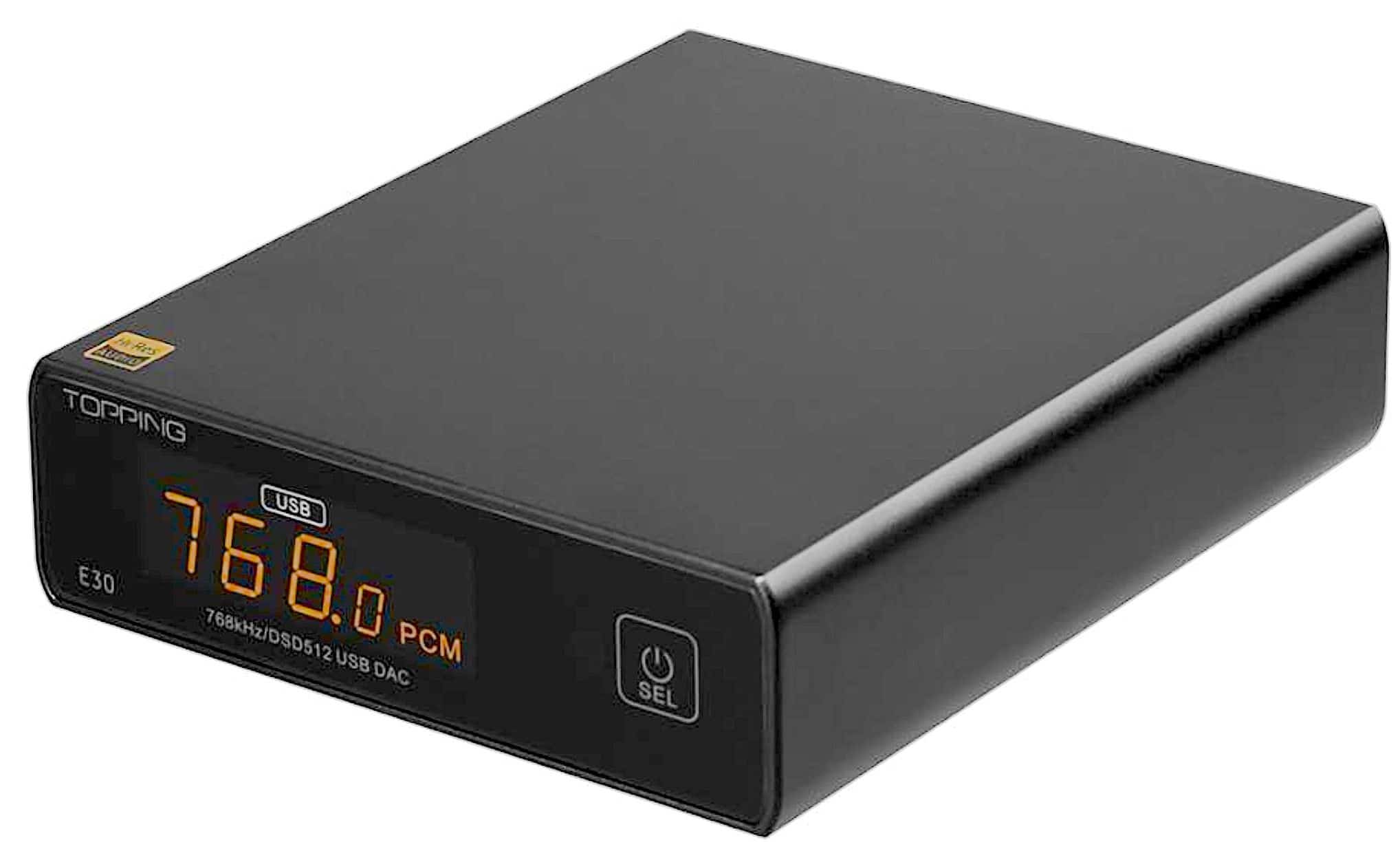
It’s a dinky little thing and arrives with an added pre-amp facility, Paul Rigby reviews this low-cost DAC
Topping seems to have descended upon the hi-fi firmament with little or no fanfare. Once day there was no Topping, the next I’m seeing the name talked about on every major techie social media platform on the planet.
There doesn’t appear to be a great deal of information on the company out there – although maybe you know different and can share it. From what I can see, the company is located at 26th Jiaomen Road, Huangge, Nansha, Guangzhou, China while it declares that, “TOPPING is the top.” Which makes up in brevity what it lacks in insight but it looks like the outfit has been around, in one form or another, since 2008.
The E30 is a DAC with pre-amp facilities stuck on for good measure. Spanning 100 x 32 x 125mm, this lightweight unit includes a 32bit AK4493 DAC chip from AKM, featuring ‘Velvet Sound’ (i.e. low distortion) technology, taken from the flagship AK4499 chip. The AK4493 integrates a newly developed switched capacitor filter “OSR Doubler” which, according to AKM, offers a low noise, low power performance.
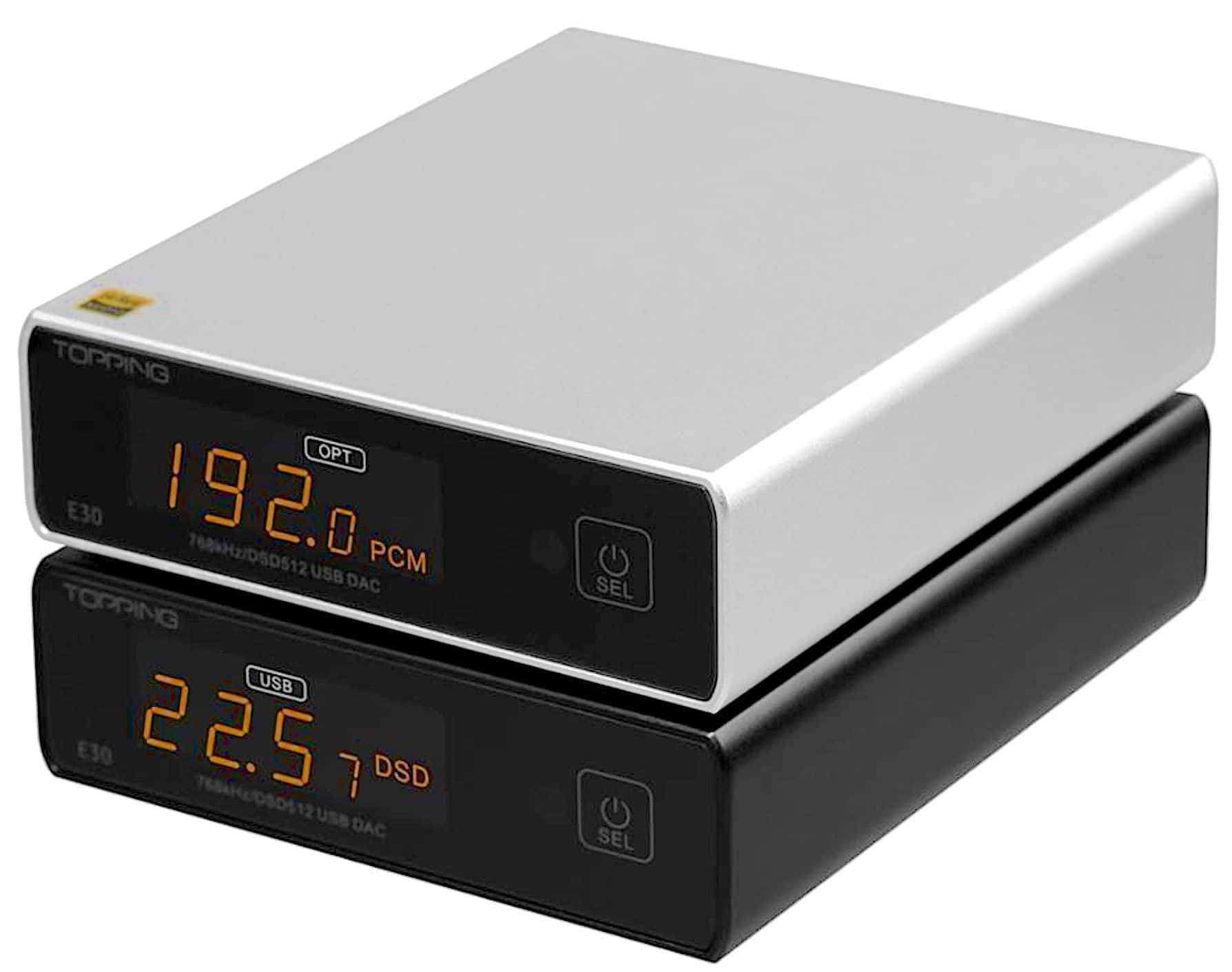
There are six digital filters included here too, which I’ll address in more detail during the sound tests. This sort of thing is a fashionable addition to many modern DACs.
The 32bit performance can reach the heady heights of 768kHz PCM and 22.4MHz DSD data (native DSD512 and DoP DSD256 support).
USB uses a second generation XMOS XU208 USB interface that is also able to support up to 32bit/768kHz and optical/coax input signals are handled by a AKM AK4118 receiver ranging up to 24bit/192kHz.
Topping call this box a ‘hot hatch’ (I really need to meet the company’s marketing department. I’m sure that’d be fun). Even though it runs cool and there’s not a hatch in sight. And it doesn’t threaten any speed limit I’m aware of…unless the digital signal support figures are what it’s getting at.
Power is provided by a barrel plug with, on the other end, a USB plug for mobile computer power. You can, if you wish, add a mains USB plug to add power direct from the wall.
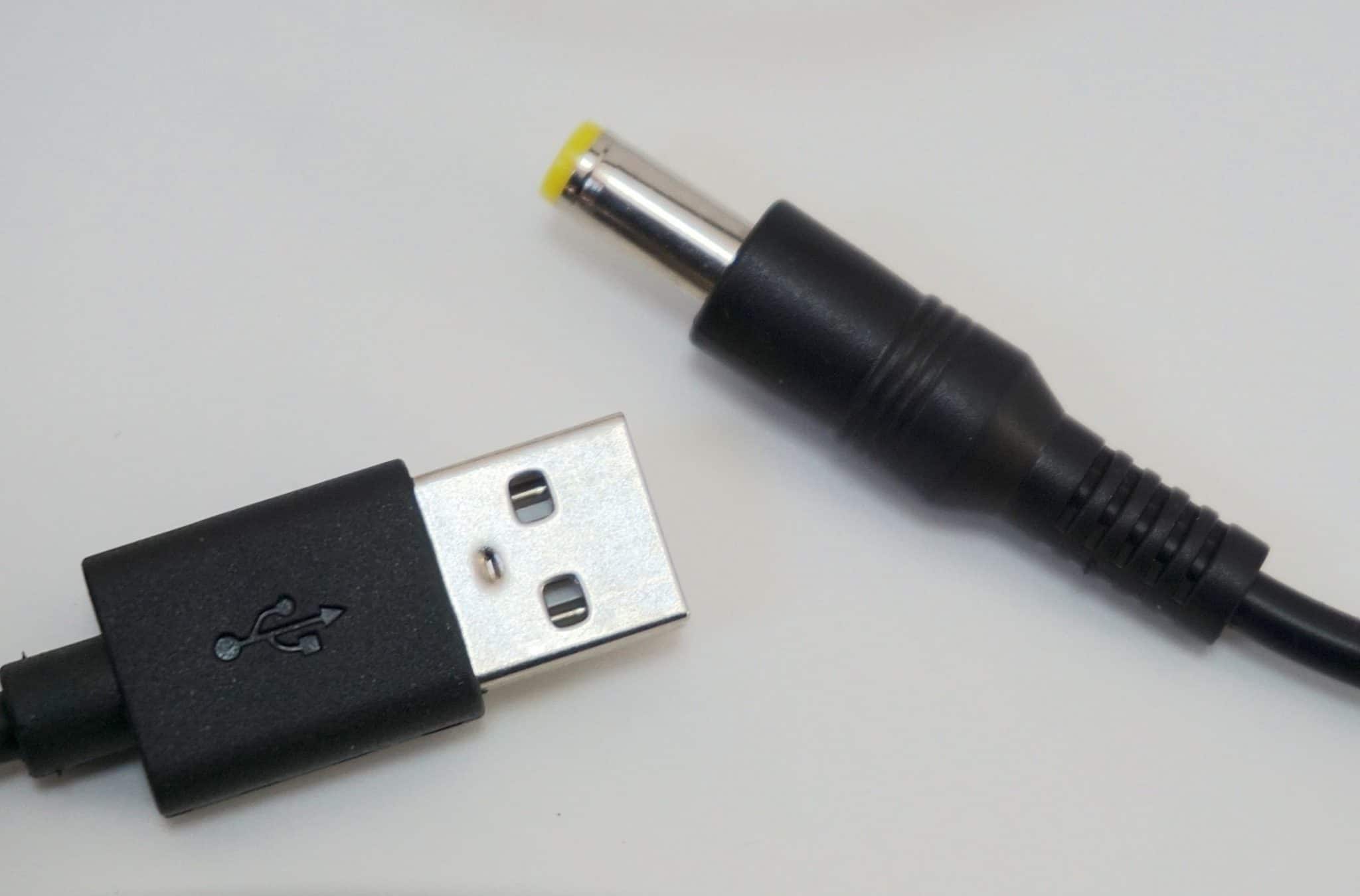
Even though the E30 can fit in a palm of your hand, its back panel is packed with commonly used inputs. In addition to those listed above, you’ll find a pair of RCA outputs. The front panel is in turn clean and minimalist, it has a relatively large OLED display and a multi-function touch power/standby button that can also be used to switch the active source depending on how long you press the thing.
An auto on/off function switches to a stand-by mode when it detects a continuous loss of signal for at least one minute. Once any signal is detected again, it will turn on and automatically switch to the input that’s receiving the signal.
A built-in volume control function allows you to adjust the volume from -99dB to 0dB with the included remote control. That remote also offers controls for power, track change, mute, volume, screen brightness and a filter change button. The latter is an excellent and not very common addition. Some very expensive DACs I know need such a button on their remotes.
The little E30 is available in black or silver.
SOUND QUALITY
Firstly, let’s look at the E30 as a pre amp. To test this, I connected it to a pair of YU4 powered speakers from Kanto and played Bob Marley’s Jamming via an Astel&Kern AK120. Output was rather unbalanced, bass heavy with rather bloomy bass at that. Mids were claustrophobic, treble was rolled off while the soundstage was restricted and stuffed full of cotton wool. In pre-amp mode? No. Don’t go there.
So I took a deep breath and turned to the DAC instead.
To begin, I grabbed an Audiolab 6000CDT CD transport and connected it to the transport via coax and played Leo Kottke’s Great Big Boy CD, highlighting his complex finger-picking guitar technique.
The sound was intriguing because I did hear a slight edge around the upper mids. Something that became accentuated with added gain.
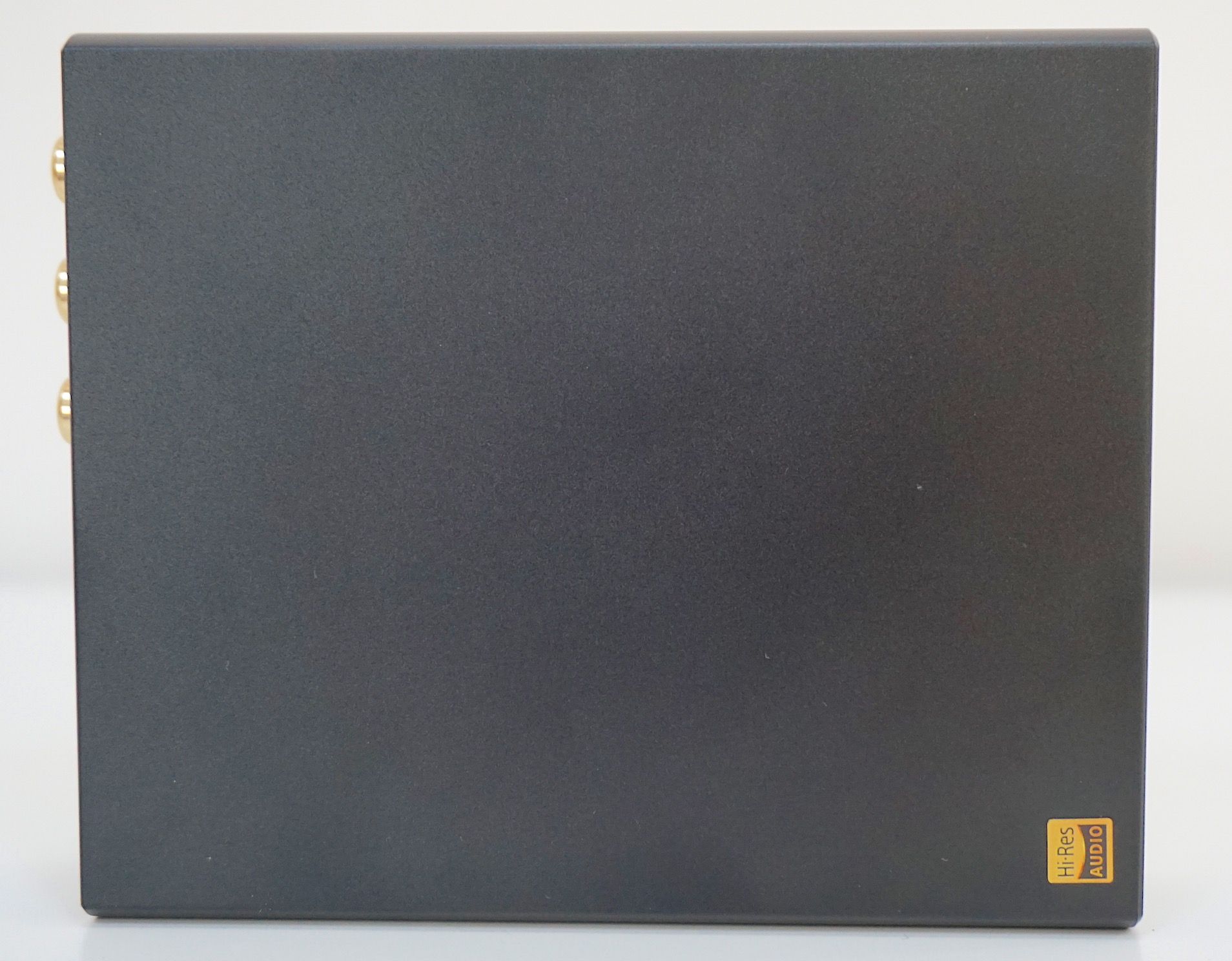
Apart from that, I was impressed with a focus around the same upper-mid area. The Kottke vocal offered his signature, Johnny Cash-like, rough texture that supplied plenty of emotion and subtle emphasis. Hence, the delivery of detail was successfully achieved via the E30.
In fact, all of the instruments were easily tracked by the ear here whether that be main percussion via drums or secondary via the likes of the subtle maracas interjections plus rimshots and xylophone.
OK, let’s pause for a second here and step back from this review.
Why? Because everything you’ve read above in the DAC sound test was coloured by a filter. That is the sound, thus far, was being pushed through the DAC’s default filter setting. That default was called Short Delay Sharp Roll Off.
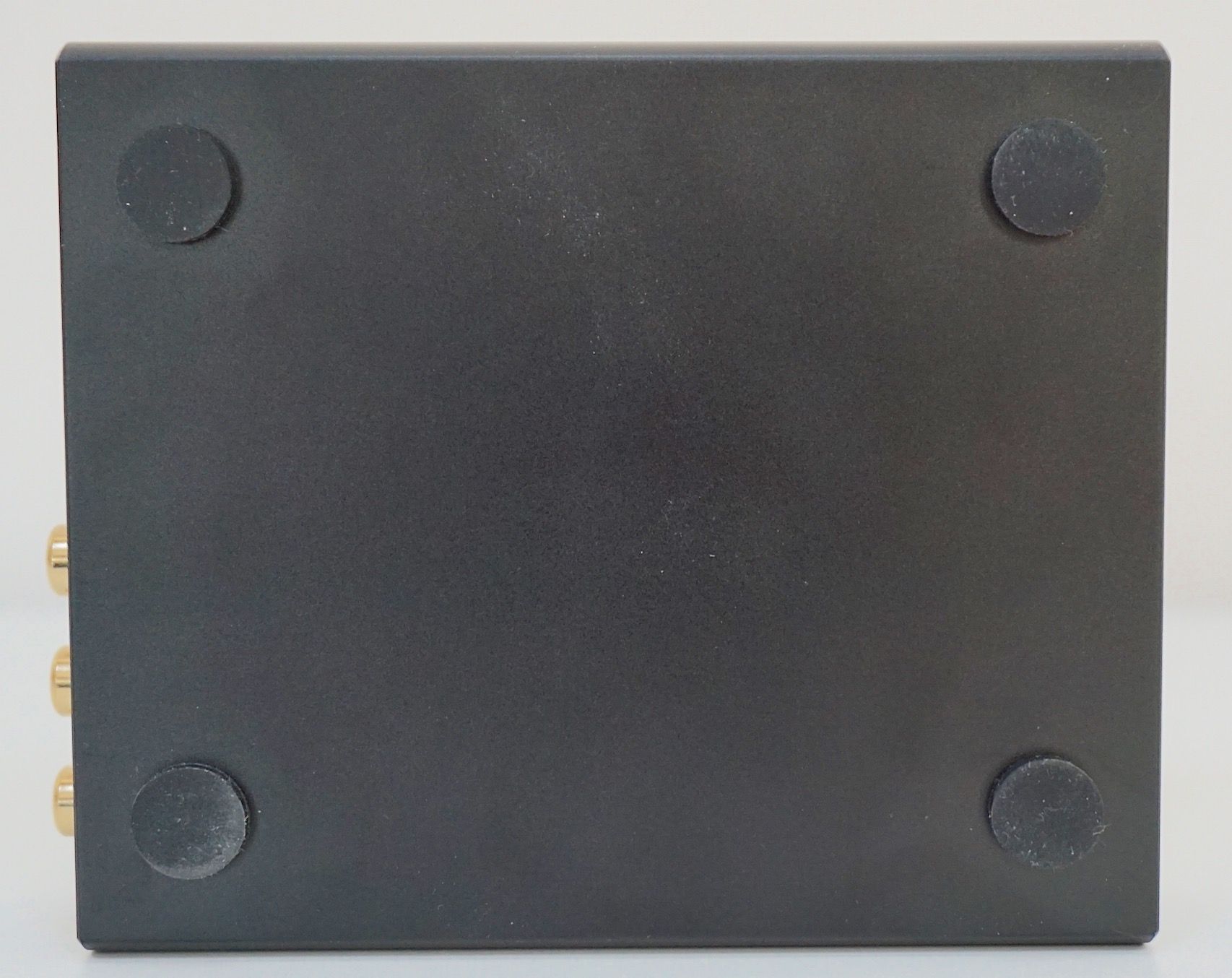
So, I decided now was the time to rotate that list and find the best filter to enable me to carry on with the rest of the sound tests. The reason? Because you can’t turn off the filter. You have to go through one of them. So, my first task was to find the best one.
I thus changed from Short Delay Sharp Roll Off to Short Delay Slow Roll Off.
I much preferred the latter which removed that irritating midrange edge, added a touch of space and air and allowed an element of reverb to hang off the lead vocal and the backing instruments. Notable highlights were the airy nature of the Hammond organ and the more ringing metallic sounds from the guitar.
Next on the list was Super Slow Roll Off. This filter was fine but not quite as detailed as the Short Delay Slow Roll Off option. I felt that clarity was dimmed a touch too.
Next was Low Dispersion Short Delay Filter which sounded comparatively flat. Inoffensive and friendly it was but it also lacked definition and insight in the mids while bass was a little soft.
Onto the next filter, Sharp Roll Off, which was a mite too compressed for my liking.
The last option was Slow Roll Off. This was better but there was still some brittleness around the placing go guitar strings.
In short? I preferred Filter 4, Short Delay Slow Roll Off which, at least to my ears, presented the most balanced and neutral sonic presentation.
As an aside, I wish there was a Filter Off option on this and other filters currently plastered over modern DACs. The proliferation of filters in and around DAC chips without a disabling option doesn’t help when trying to settle on your preferred sonic type. I wonder, even though I preferred the Short Delay Slow Roll Off filter, if there was a Filter Off option, something flat in sonic presentation, if the sound would be further improved?
And before we progress, one tip if you ever demo a DAC at a hi-fi dealer. Make sure you ask what filter you’re listening to. You may be mistaken in thinking that the current sound output is all there is – ask the dealer and check in case an unfriendly EQ is in operation. Hence, if you ever demo a DAC and dislike the sound, make sure you find out if all your objecting to is a mere filter.
Finally, back to the E30, if Filters have to be part of a DAC’s life, I again applaud the inclusion of a Filter button on the remote. This is an essential addition. Many other, more expensive DACs, demand that you select a filter from an awkward front fascia control.
I then turned to optical and connected my Astel&Kern AK120, again playing Bob Marley’s Jamming at 24bit/96kHz.
I’ve sometimes find optical connections to be a tad noisier than coax and that was the result here. Saying that, noise wasn’t overly intrusive and actually exhibited itself as slight ‘emphasis’ instead of anything too intrusive. The optical effect added just a slight – and I mean slight – solid state hardening to the overall presentation. Hence, there was a slight fizz in and around the treble. That said, in some ways, this effect increased the pace of the music because bass offered impact and solidity. The spacious soundstage helped to keep the effect from detracting from the overall music.
I then connected the E30 to my MacBook via USB and played Eric Bibb’s Meeting at the Building at DSD128 via Audirvana Plus.
My first impression here was the low resultant noise, at least in relative terms to to the other inputs available on the E30. This track offered a rather epic soundstage, being both wide and high and offering plenty of space with the complex and busy presentation, full of voices and instruments, spaced and and uncluttered. I was able to up the gain by several clicks here without any listening fatigue, enabling me to access even more information than usual.
One extra note, I did notice that one reviewer on YouTube complained of sound drop outs at DSD64. I tested this track at DSD64 and found no ill effects here. The track played perfectly. Whether that’s because I benefitted from a more recent firmware upgrade or because of some other reason, I’m not sure but be aware that DSD64 should perform fine. At least it did for me.
In PCM terms, via USB, I played Sonny Rollins’ St Thomas at 24bit/96kHz and the low noise performance was retained, so that aspect wasn’t just a DSD effect, this PCM track followed suite. Detail was similarly abundant here with plenty of good clarity on offer.
CONCLUSION
Used as a DAC only and at this price? The Topping E30 offered a goodly selection of features and, as a DAC, performed as well as or better than similar units of twice the price, the E30 is a dinky marvel that features a small footprint and is perfect for any budget hi-fi set up. Spend a bit of time getting the right DAC filter for you in place, one that is suitable for your ears and sonic tastes and you’ll have tremendous fun with this box that offers excellent value for money.
TOPPING E30 PRE/DAC
Price: £107.40
Website: hifigo.com
TO BUY CLICK HERE:
USA – https://amzn.to/34MWAJF
EUROPE – https://amzn.to/3mLGFBk
GOOD: price, small footprint, feature set, general sound quality
BAD: pre-amp, no Filter off option
RATING: 8
[Don’t forget to check out my new Patreon Page at www.patreon.com/audiophileman, for exclusive postings, giveaways and more!]
REFERENCE
Apple MacBook
Astell&Kern AK120
Tellurium Q & QED cabling


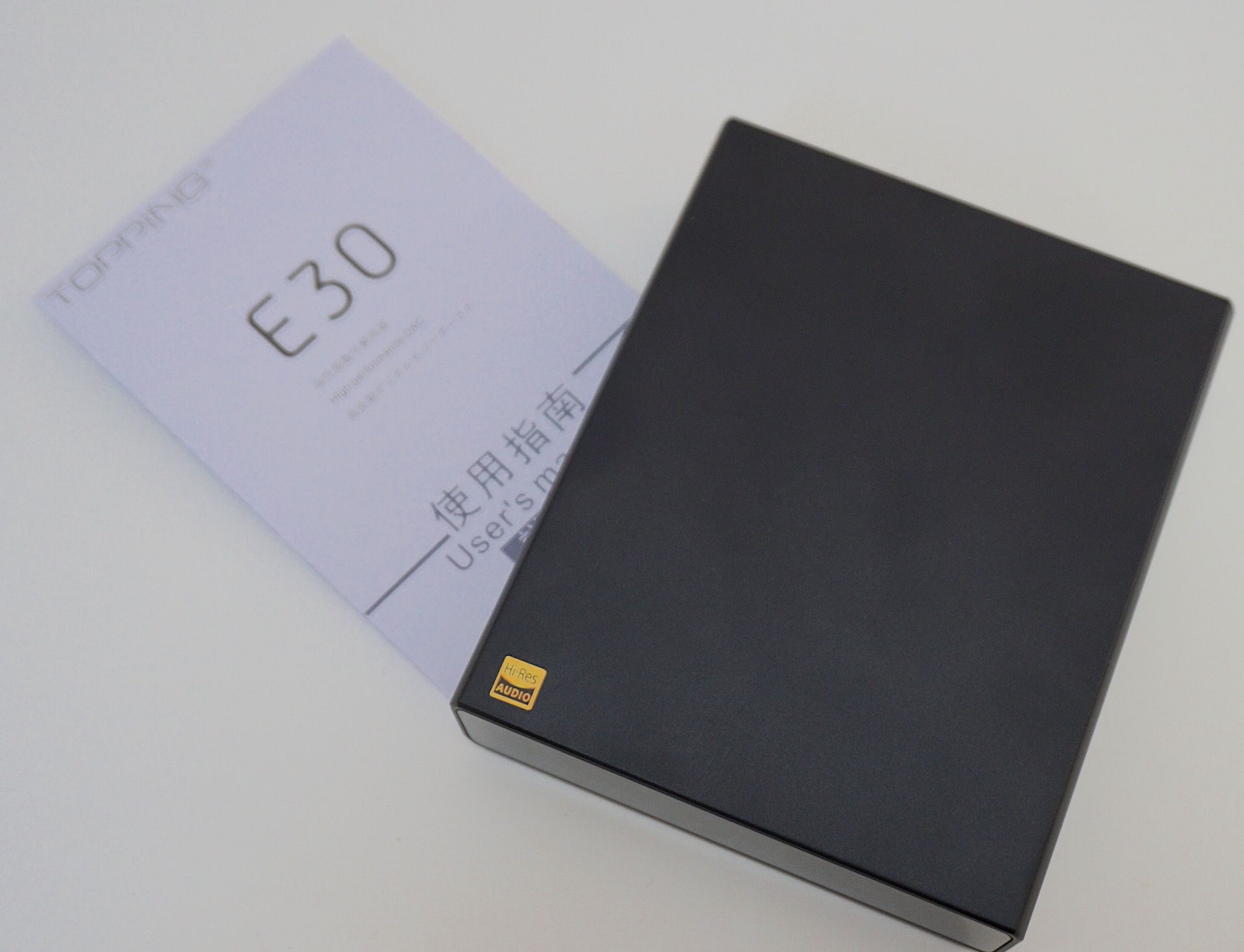
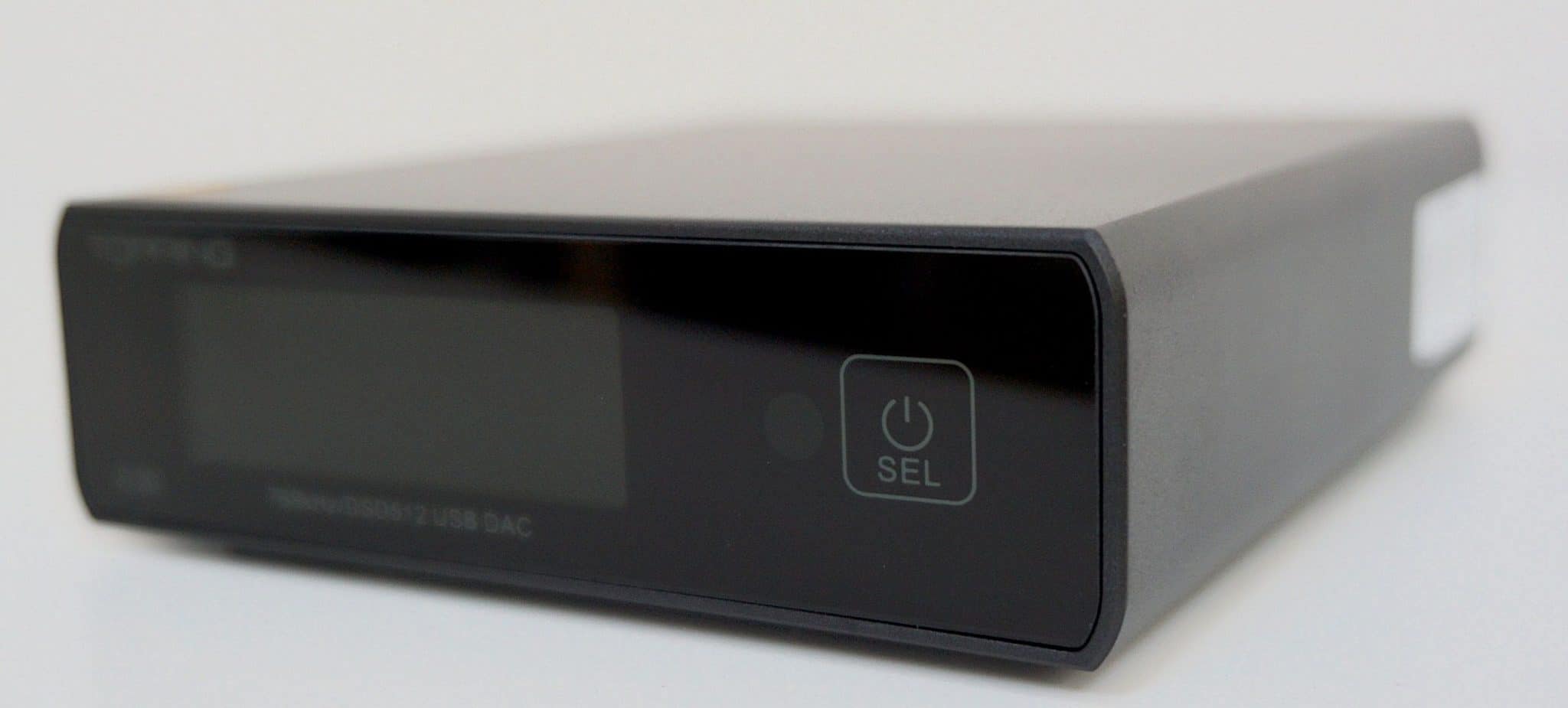
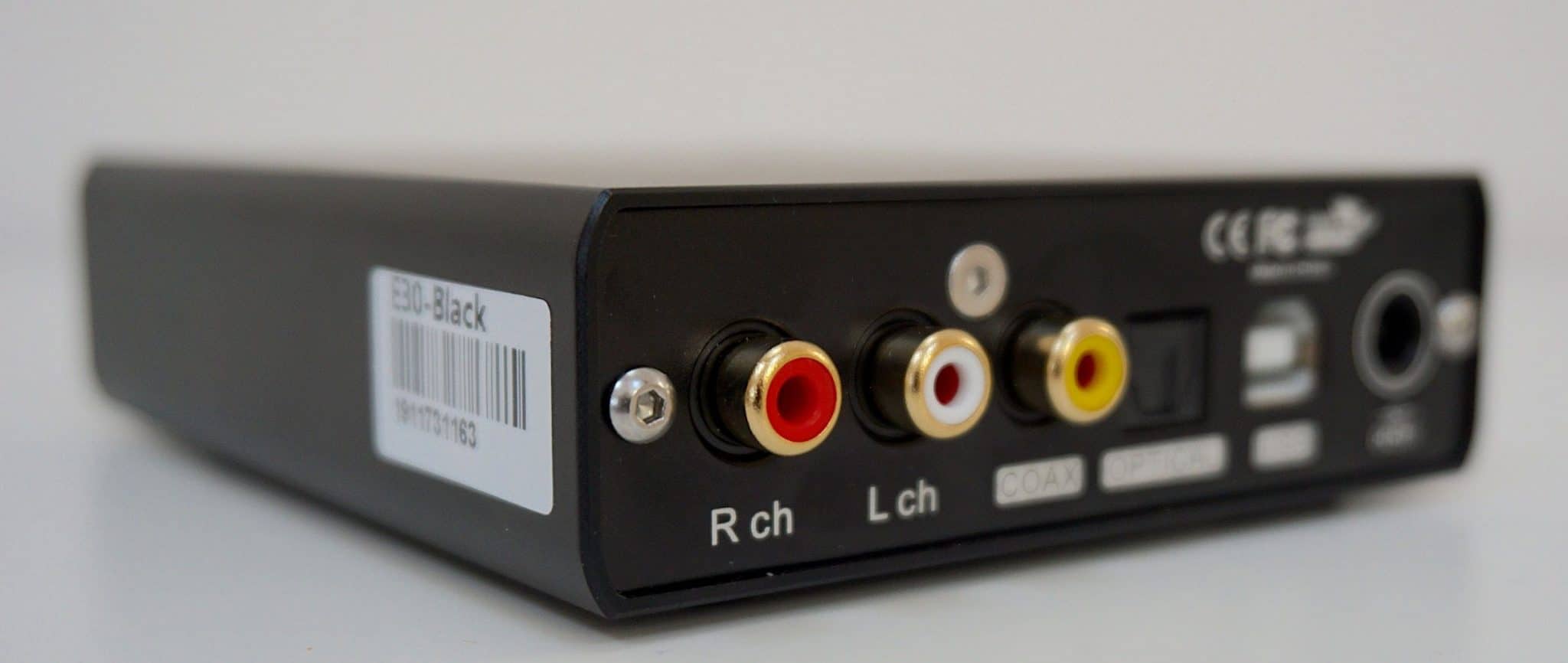
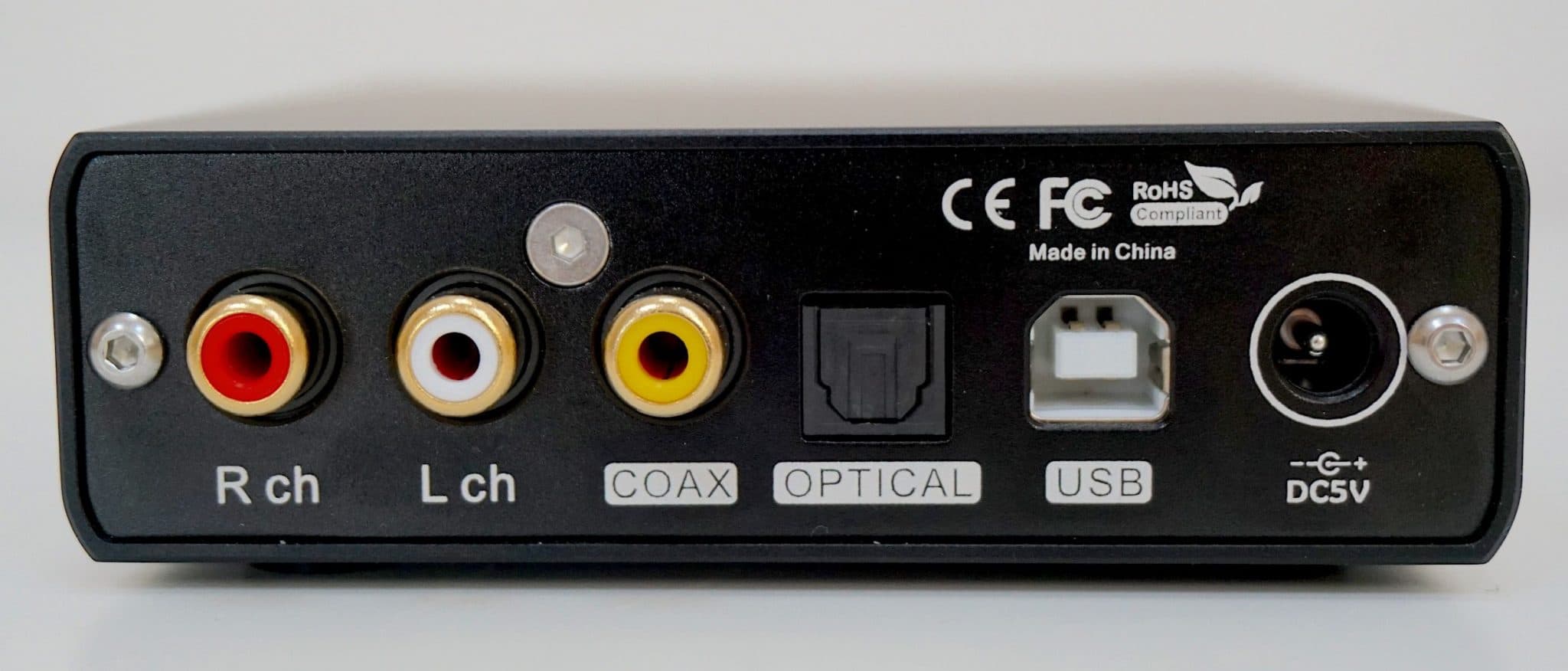
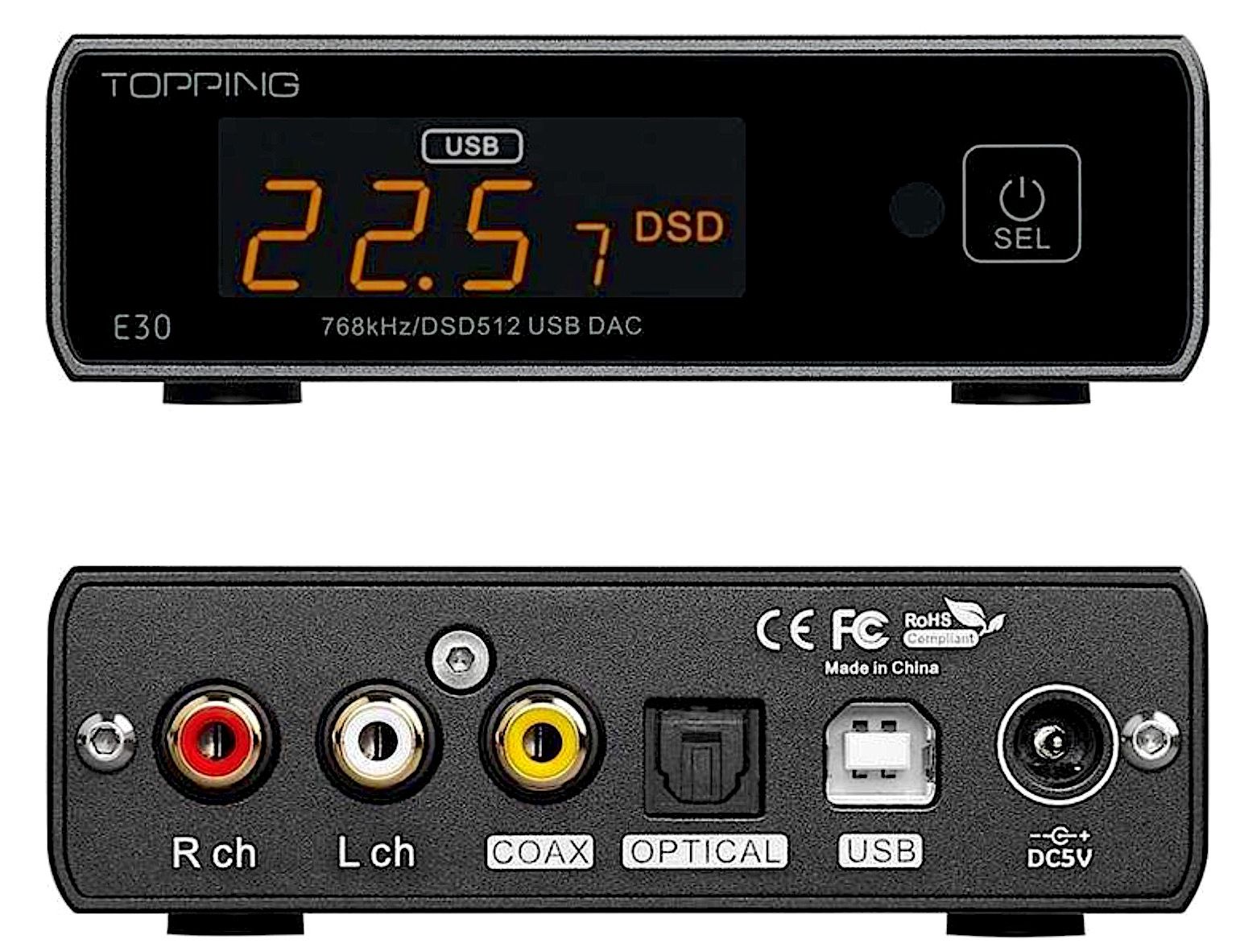


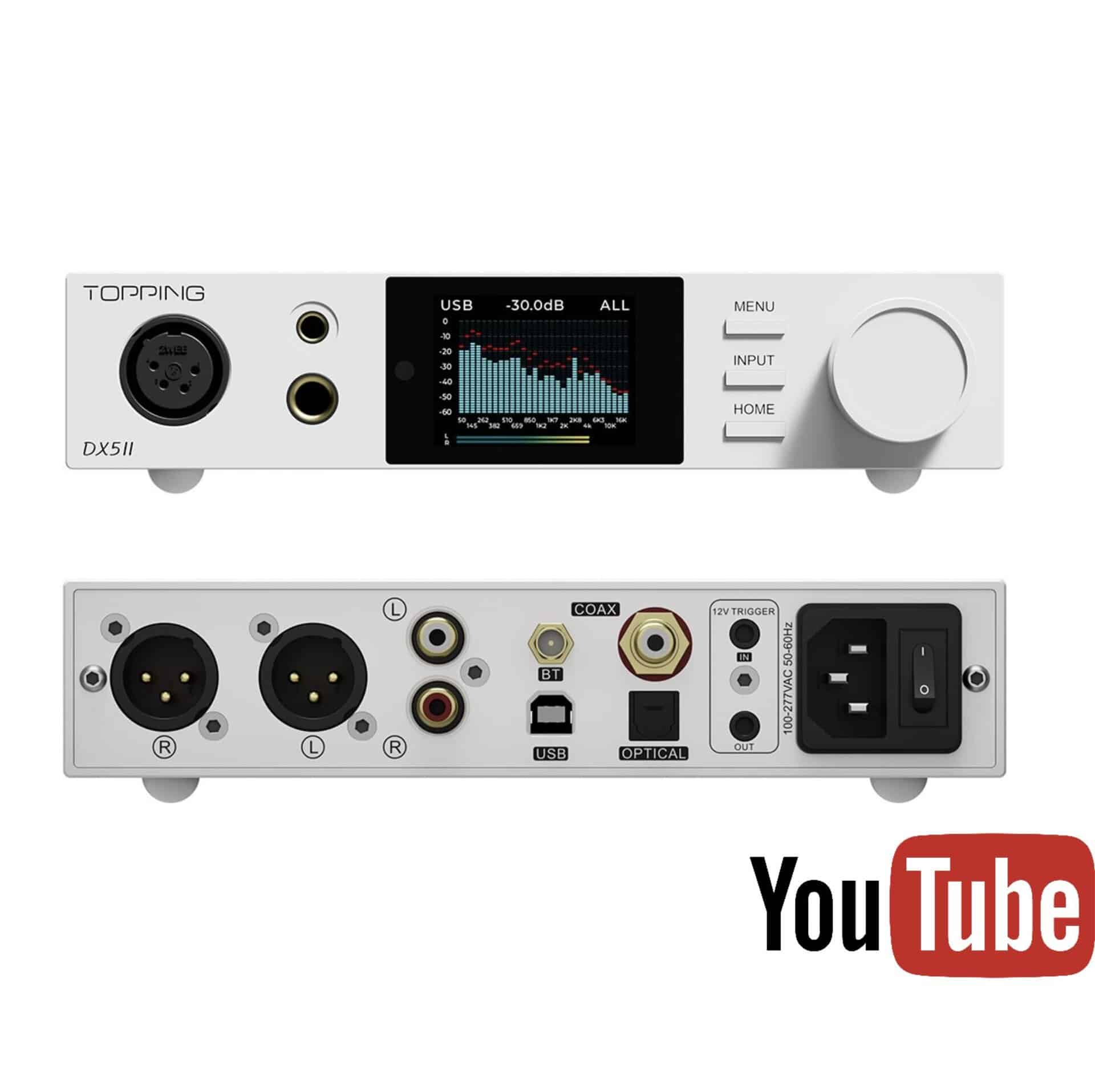
I’m actually looking at the Topping D30 instead. I was hoping to use the preamp output to my active speakers. Now I’m full of doubt and stricken with fear.
Blimey, please don’t be stricken with fear. HiFi’s not worth it 🙂 I haven’t tested the D30 so I can’t comment upon it, I’m afraid. So were you hoping to use the E30 as a preamp? Because I don’t think the D30 can be used in that way…I could be wrong, of course, because I haven’t seen it ‘in the flesh’ but I don’t *think* that’s the case. If you want to use either box as a DAC then you might want to look at this low cost (¬£60) pre amp from Schiit as a quality alternative: https://www.schiit.co.uk/preamps/sys
Is the E30 really that bad as a preamp to you? I’m interested to use it.
By all means go ahead, if you have an urge 🙂 That said, my comments stand.
Looking at the inputs and outputs on the back I’m not clear how you tested the pre amp section on its own? Surely all the 3 inputs go through the dac anyway, unless there is something in the software to isolate the pre amp?
Hi Grady – there is, yes. You can switch to pre-amp mode from a button on the front.
Hi Paul, do you think E30 would be a upgrade for the internal DAC in Audiolab 6000a? Thank you.
Yes indeed. Make sure you use coax and a decent cable though.
You mean to use coax as the input to the dac? Not good to use USB? I assume from the dac to amp it will be rca. Thank you very much for your help.
I should have asked before Griffin so pardon me, are you connecting the E30 to a CD transport or integrated CD player?
Sorry Paul I should have made it more clear. I have both Audiolab 6000 CD transport and the integrated amplifier. The reason I consider E30 is because the 6000a amp does not have a USB input, but I want to playback hi-res music from my phone or Mac. I was wondering if E30 would sound better than using the internal DAC in Audiolab 6000a amp.
Hi Griffin – gotcha, you can connect the transport to the DAC via optical or coax – coax is best. Then run a pair of RCAs from the DAC to the amp.
Thanks so much for your replies, Paul! I was browsing your reviews and also find iFi ZEN DAC. How would you compare it with E30? I would use either to playback files on my phone and laptop output via USB to the DAC.
The Zen is superior when connecting a USB device like a laptop but it doesn’t have the coax/optical sockets of the E30.
Hi Paul
If we talk exclusive only for the DAC function, without the headphones, I don’t use at all headphones, so only about the DAC line, for put signal into a integrated amplifier with two speakers connected, which one do you think that will provide the best sound quality: ZEN or E30?
I had a ifi nano IDSD BL till now and to be honest, it didn’t impressed me to much, I don’t know, but I believe that they more developed this product to have better quality sound on the headphone line and less on the line out (DAC)
Thx.
Hi Terra – the ZEN for USB links for the E30 for coax/optical.
Would the E30 dac be better than using an older D10 (for USB to Coax) and Audiolab 60000A’s dac?
An external DAC is preferable (in the majority of occasions) to a built-in model due to the general benefits of isolation. If you can find the D10 at a bargain price, and such a thing is possible, then you might want to grab that but the E30 is recommended.
All DAC processes have to have some sort of low pass filtering on the output to remove the aliasing caused by the artefacts of the sample rate clock in the frequency domain. The reconstruction filter may be as simple as a first order (6dB/Oct) RC network if the sample rate is way above the highest wanted listening frequency, often the parasitic capacitance and resistance in the output circuitry is enough to achieve this on the cheap.
There is always a trade off between steepness and ringing in the pass-band or leaving unwanted junk in the audible frequencies. Asking for a DAC with no filter at all is not an option. Even the units with no choice have a reconstruction filter on the output somewhere. Personally, I think it’s good to have a choice.
Hi Steve – extra filters, user-applied EQ-effect filters, can be disabled in many DAC packages or are not included at all in others. That’s what I was comparing it too.
Hi Paul,
Steve’s point here was that (i) DACs need filters, in the same way guns need barrels; and (ii) the filters provided by Topping E30 are filters embedded with the AKM DAC chip — please read the chip’s datasheet, where it is clearly indicated (and promoted) that the chip has the following native filters in technical terms:
– Short Delay Sharp Roll-off, GD = 6.0/fs,
– Short Delay Slow Roll-off, GD = 5.0/fs
– Sharp Roll-off
– Slow Roll-off
– Low Dispersion Short Delay Filter
– Super Slow Roll-off
These are not “extra filters, user-applied EQ-effect filters”, as each independently is necessary for the D/A process to work. Feel free to read datasheets of other raw DAC chips (ESS, TI’s PCM, etc.). They all require filters,, but unlike AKM, most only provide one or two choices (see PCM5102/5122. which generously provide two options). Even the old-school NOS DACs/DAC designs needed simple R/C filters.
Hi Rachel – many DAC chips do not force you to select between a host of filters(e.g. https://theaudiophileman.com/cad-scot-berry/). They might inherently have been designed with a filter but that’s between the chip and the chip designer. The sonic decision is a simple one for the user, therefore. You either like the presentation or not.
There are other chips which actually allow you to disable the user filters. See this review as one example of that: https://theaudiophileman.com/essence-network-player-review-432-evo/
You may prefer the built-in, multi-filter option and that’s fine if you do. I have no issue with that. It’s just that I prefer the simpler, more direct approach.
It’s most interesting that you mentioned CAD 1543, as I was somewhat a specialist in designing DACs using Philip’s TDA 1543 DAC chip (see my random mention of NOS DACs earlier). That was more than 15 years ago. I can assure you that the TDA has/needs a filter too, and there are ways to implement such filter (i.e., multiple options), exactly in the same way the AKM chip needs a filter and is providing designers with a few hardware filter options. The only difference is that AKM saves designers’ time by having the filters pre-made with the chip, while the TDA offers a number of ranges but one still has to pick and choose a “favorite” combination.
Thanks for that Rachel and yes, I believe I generally covered that very point in my previous reply.
Thanks for the in depth explanation on the filters
In your opinion is there a burn in period? Yes? Forty hours or so?
Maybe my hearing is gone. I don’t hear any differences with the filters. No, not using headphones. My normal pre/Power/speaker set up.
Thanks
Not everyone hears filter sound differences but I covered it for those that do. If you don’t, then ignore that bit and just enjoy your music 🙂
HI PAUL
modi 3 or e30 ?
only dac mod will replace the dac of pioneer a50 da
thanks shay
Hi shay – Modi3
Hi paul
E30 dac will be improvement over bluesound 2i ?
Thanks tomer
Hi Tomer – I haven’t compared the E30 with the internal 2i DAC but I do generally speaking, advocate isolating the DAC module from the streamer to improve sound and lower the noise floor.
I just got one and it’s good